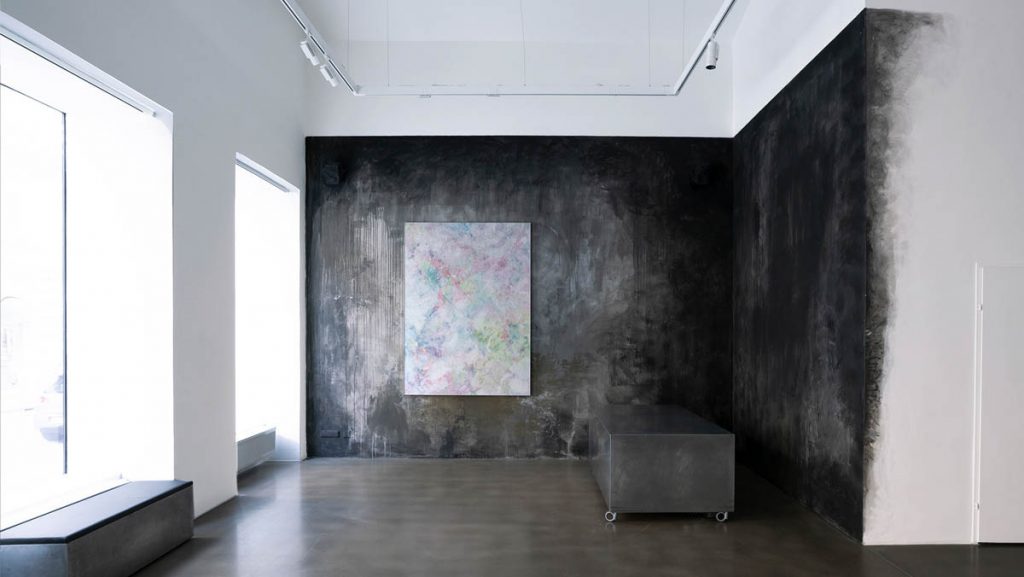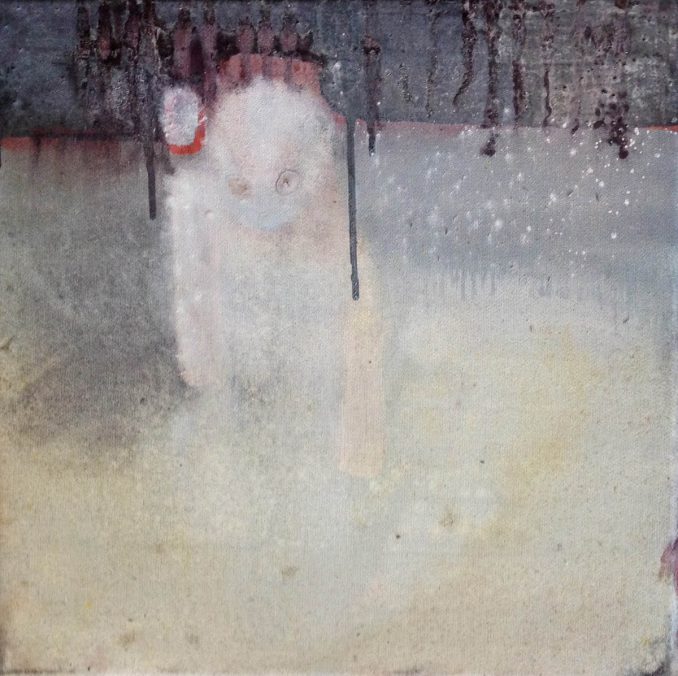
When Astrid Rausch uses oil colors, this says something about how she experiences time. To her process as painter, time has significance. Mixing pigments with linseed oil herself (instead of buying prefabricated color tubes from one of the various manufacturers) stems from the same soul: the inclination for time to pass, for certain qualities to emerge.
Although Rausch sometimes mixes pigment with binder in a separate glass or bowl (to use the created oil color later on, in the traditional way), her usual approach has her mixing pigment and binder directly on the canvas – which is unusual, because there is nothing even remotely dry within colors created like this. To state that Rausch uses “oil colors” gives the entirely wrong impression of firm-ish oil being pressed out of tubes; instead, imagine the color’s substance having the consistency of olive oil or maple syrup – but other than water color, stop thinking about it drying anytime soon. Rausch’s process essentially prohibits any ordinary process of applying paint onto a vertically mounted canvas – already minutes later, nothing would be there anymore except traces.
Rausch’s process essentially prohibits any ordinary process of applying paint onto a vertically mounted canvas – already minutes later, nothing would be there anymore except traces.
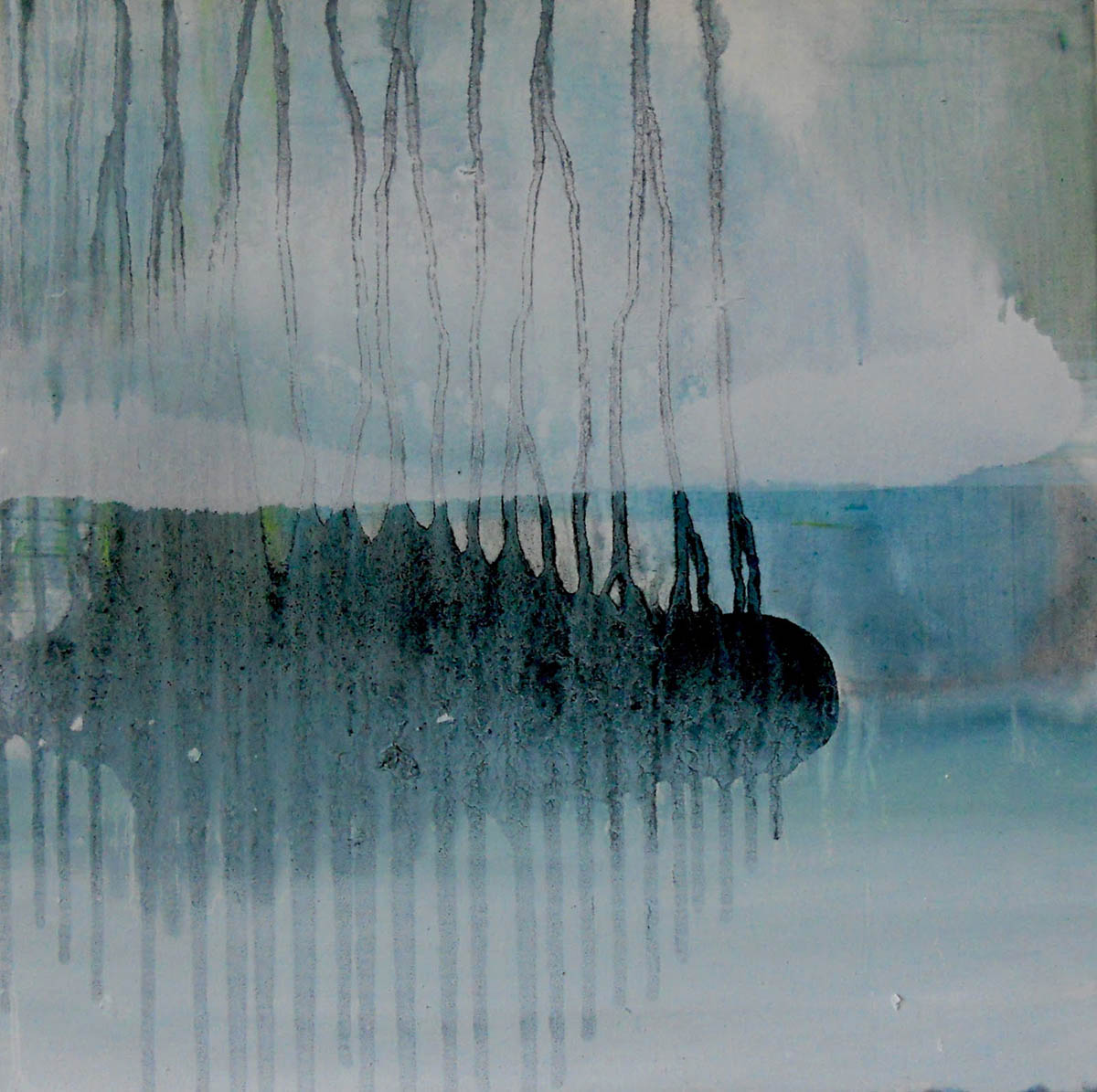
Like Pollock then, Rausch paints with the canvas lying horizontally on the floor – but the process of ‘drying’ with Rausch is rather one of becoming, taking weeks and months for anything to get into the state of permanence universally ascribed to painting. This rhythm, this pacing leads to Rausch working on paintings in parallel: imagine the background of Doig’s Metropolitain (House of Pictures) being Rausch’s studio floor. This implies the studio floor real estate’s sudden raise of value, especially when compared to other artist studio’s floors: where these usually represent archive space, for Rausch the archive always seems to be the walls, resulting in the floor being this processes’ potential bottleneck.
Amongst others, this results in a rare choice of format: Rausch’s are small, only rarely opening up to mid-sized canvases. But their depth and energy, their vibrancy!
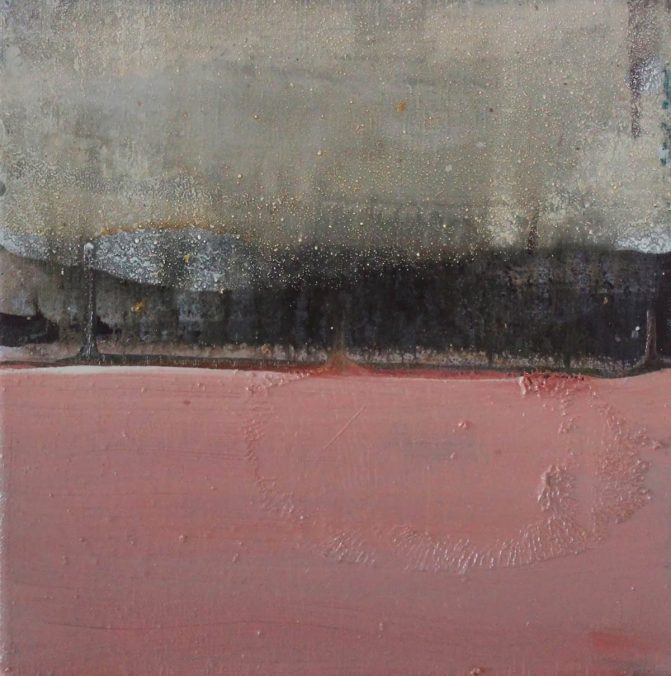
Astrid Rausch: Vastness By Christian Bazant-Hegemark 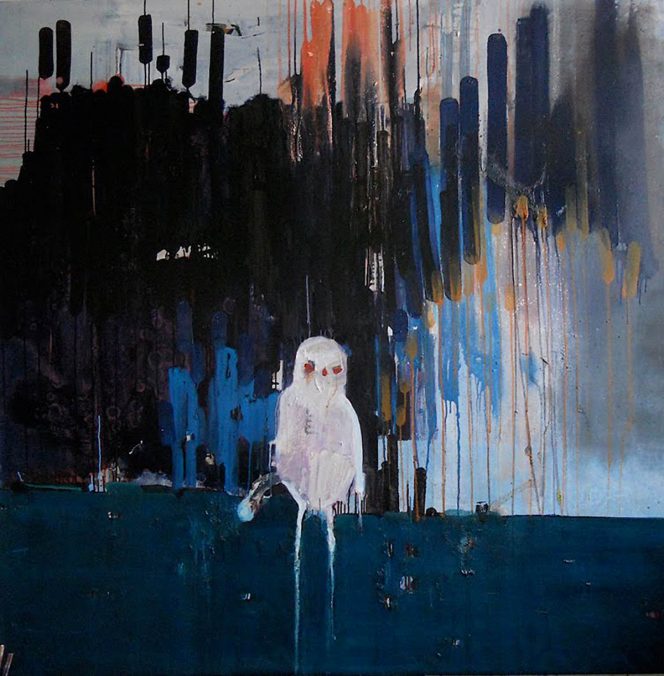
Astrid Rausch: Vastness By Christian Bazant-Hegemark 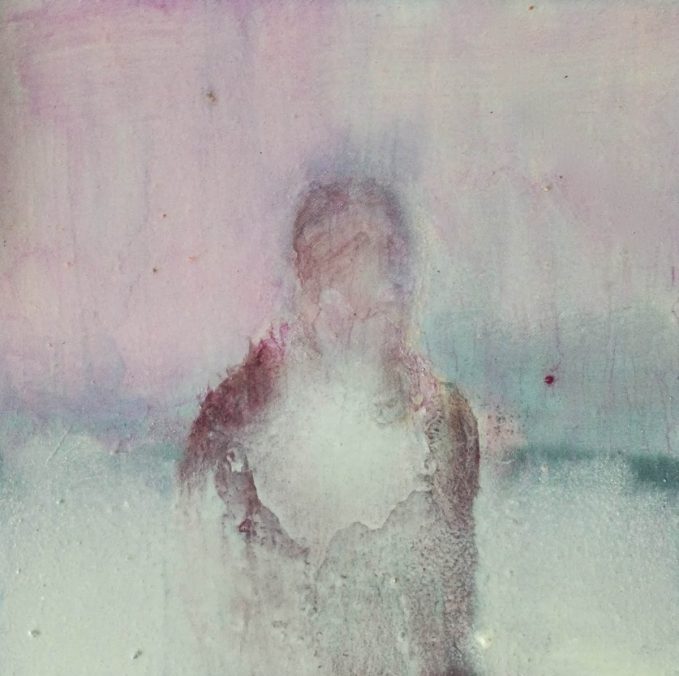
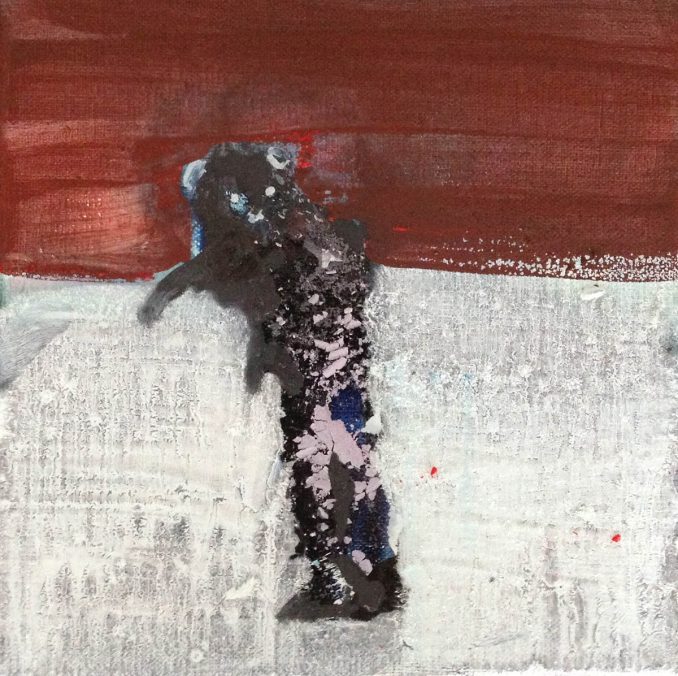
Astrid Rausch: Vastness By Christian Bazant-Hegemark
me how i was, 2013 40 x 45cm, Oil on canvas | person dressed as bear, 2013 30 x 30cm, Oil on canvas
Rausch explains her process as one of finding and getting lost within, of diving into paintings – with a rare presence, she balances the apparent dichotomic poles of the artist as realist and romantic – trying for words, trying for meanings; eventually getting both frustrated and enlightened, because of the continued realization of painting’s ability to actually already say it all; by non-verbally conveying all required information, emotion, knowledge. She talks about alchemy, about painting’s potential to express things that actually only exist within the medium of painting. How to explain trickling, she asks. How to explain flowing. We talk about speech as quantisation that, inherently, misses what it aims to express. Trickling can’t be described, but within a painting, it can be experienced.
Rausch’s paintings are manifested transformations, contemporary journeys, walking a path rarely used.
The aforementioned pace and rhythm also require a certain time in order for Rausch to get used to the painting’s presence, before actually being able to physically do anything with/to it, like wielding a brush. Rausch talks about the crescendo and decrescendo of working a painting, comparable to the opening and closing of a pair of scissors, with possibilities at first seemingly endless, then later diminishing in quantity. Movement.
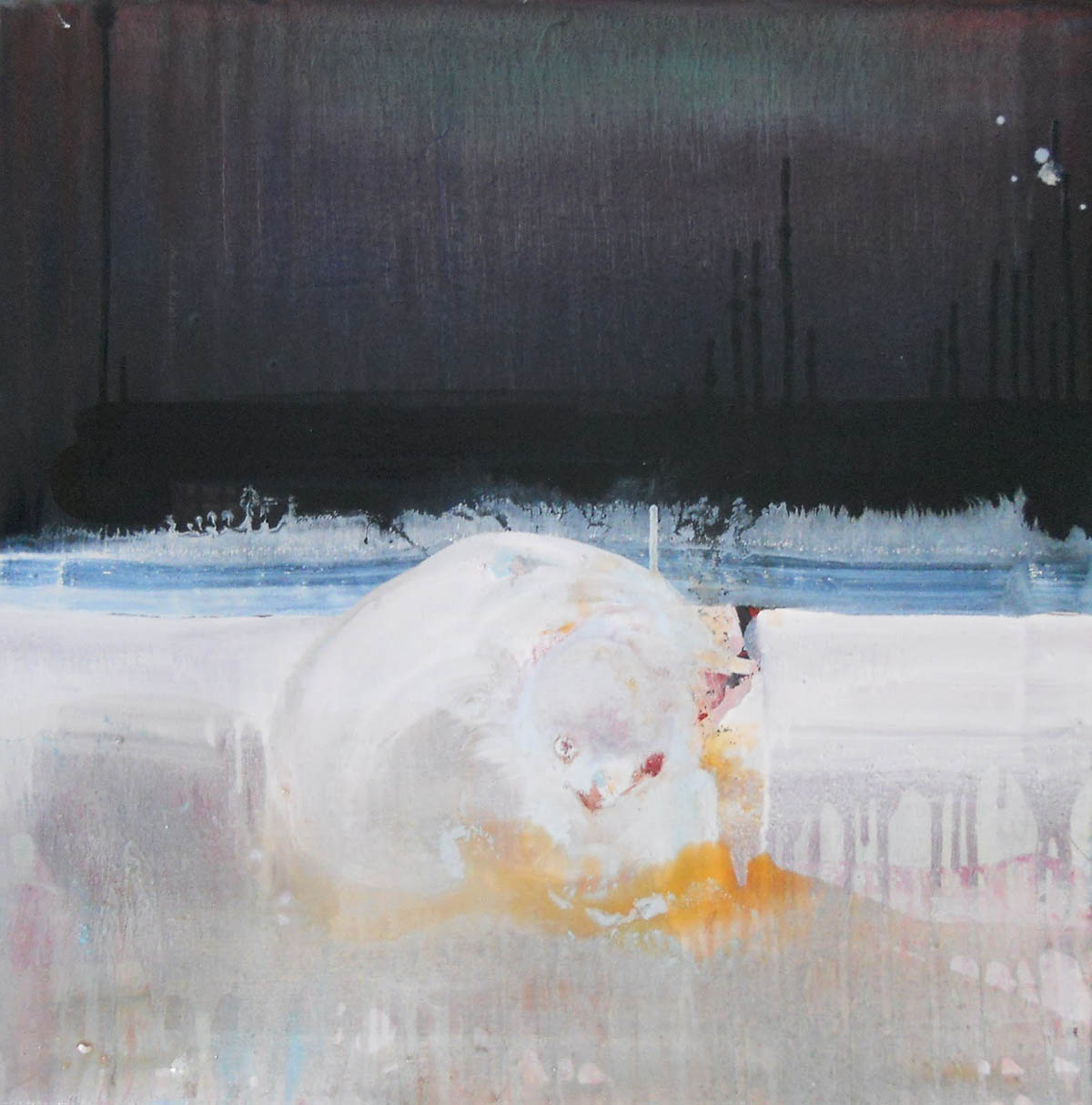
There is a sadness in the paintings that I believe to feel, although they are not sad. There is curiosity and infinity in them that painting as a process towards a manifestation in general can’t ever quite honor. The radicality of Rausch’s paintings lies in their existence: with every journey offering knowledge and thus being transformational, its coming to an end means for the transformation to reach a final, finite state, requiring locking down potentials to very real un-, or post-potentials. It requires leaving the sphere of potentialities to make room for one specific reality.
This might be what can be heard in rivers like Smetana’s Vltava, or Fennesz/Sakamoto’s Cendre: Movement. What happens when you let go. For Rausch’s paintings to exist requires a level of professionalism that defies the romantic narrative woven by this text – in the end, Rausch is a painter, not a wanderer; an artist, not a nostalgia-seeker; striving for her paintings to reach a level of commitment that could well be (mis-)understood to be the opposite of openness. There is a misty quality, a vastness to them that defies territorial definitions – not opening figuration into abstraction, but rather working in the unverbalizable state between or beyond figuration and abstraction. Instead of music, then, these paintings might be sound per se.There is strength and weakness within the becoming paint of Rausch’s process, something that Benjamin might have called Aura – something that creates a void in her paintings that lets loose ends open. Can something mysterious enter our post-enlightened world after all? By way of painting?
Astrid Rausch – www.instagram.com/astrid_rausch/
Text: Christian Bazant-Hegemark – www.instagram.com/christianbazanthegemark/




